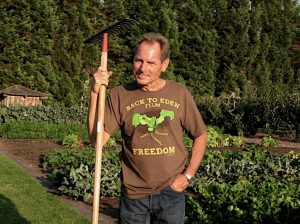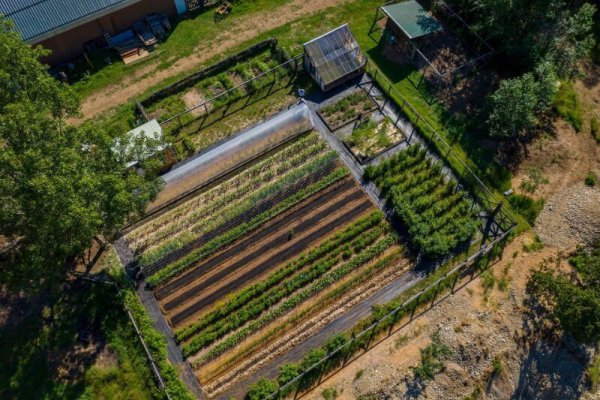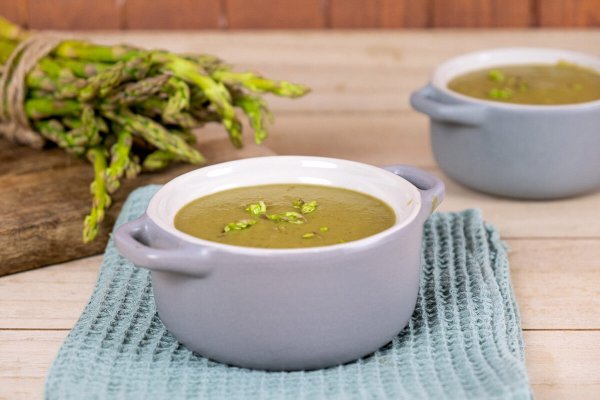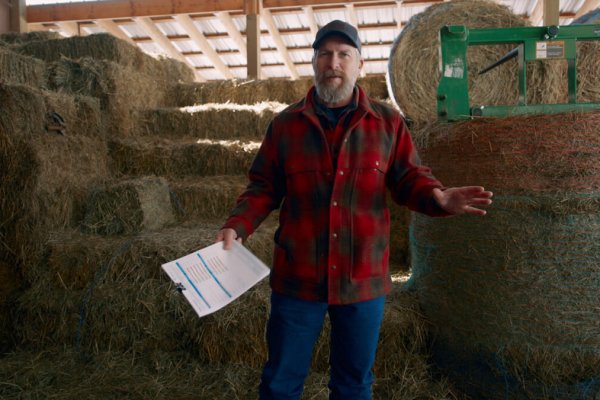











For the longest time, I struggled with consistent germination of my carrot seeds. Until I learned this hack that made growing carrots much more successful with nearly 100% germination rates, year after year. Read on for my tips on how to plant carrots, grow them for fresh eating throughout the year, and for a large harvest to put into the cellar.
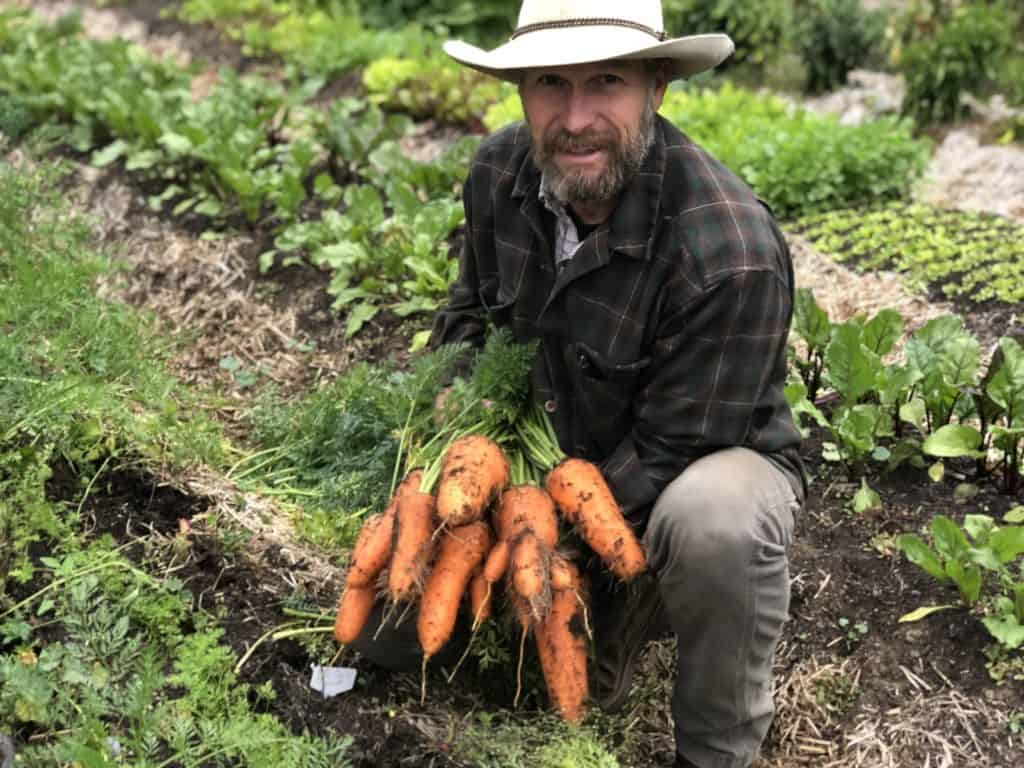
This post was originally published in June 2021 and has since been updated to include tips on how to thin and grow double the carrots in the same amount of garden space.
This is a fail-safe tip to ensure that nearly all your carrot seeds come up every time.
Carrots are one of those crops that often cause people a lot of grief because they can be difficult to germinate and get growing out of the ground. In this post, I’m sharing my tried and true method for how to plant carrot seeds.
When to Plant Carrots
As always, it’s important to know when to plant crops for the best germination rates and overall success of the crop. Carrots are known as a cool weather, or cool season crop, meaning they can be planted in the early spring once soil temperatures reach about 50 degrees F.
Seed germination occurs best when the soil temperature is between 55 and 75 degrees F.
How Long Do Carrots Take to Germinate?
Carrots have a long germination time, sometimes taking up to three weeks. Because of this, it’s easy to let too much time between waterings go by, allowing the soil to dry out and slowing or ruining the germination.
With a slightly thicker layer of soil over your carrot seeds, the soil will stay moist longer, and the seeds will have less chance of shifting or getting blown or washed away.
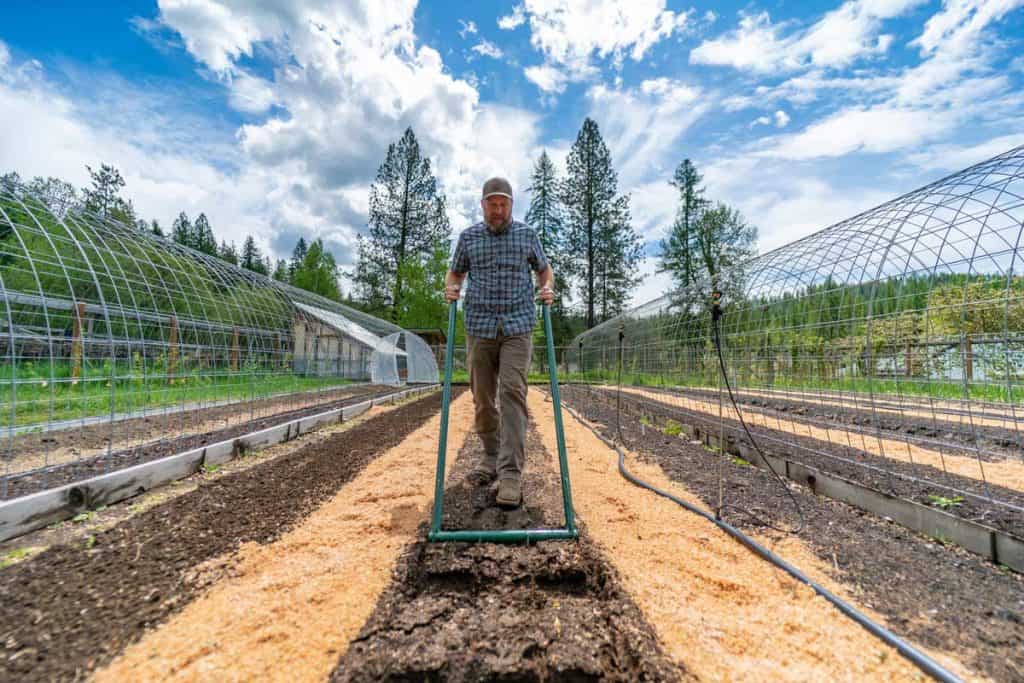
Prepare Your Garden Beds
Weed the Area
The first thing you must do before planting carrots is to prepare your garden beds. Because we use a no-till gardening method and we continually use our weed suppression strategies we have very few weeds growing in our beds.
If you have weeds, you’ll want to go ahead and remove them (by the root if possible) before planting your carrot seeds.
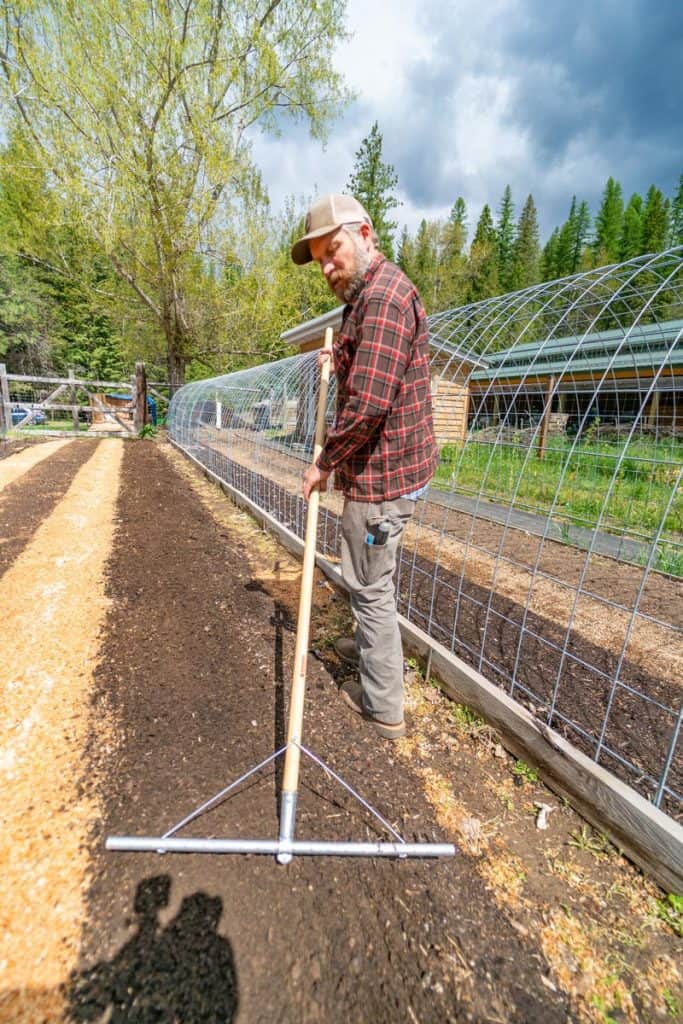
Loosen the Soil
Next, because carrots will grow deep into the ground, you need to have nice aerated and loose soil that’s well-draining.
If you’ve followed us for any length of time, you know that we believe the number one most important thing in the garden is your soil. Learn how we supercharge our soil each year here.
To loosen our soil up, we use this heavy-duty 14-inch broadfork from Meadow Creature, which happens to fall on the list of my top gardening tool recommendations. Just one pass through the beds is all we need. No tilling, just loosening up!
Even the Soil
After going through the soil with a broadfork, you’ll want to take another pass over the top with a rake to smooth out the soil and remove any debris or rocks still remaining in the beds.
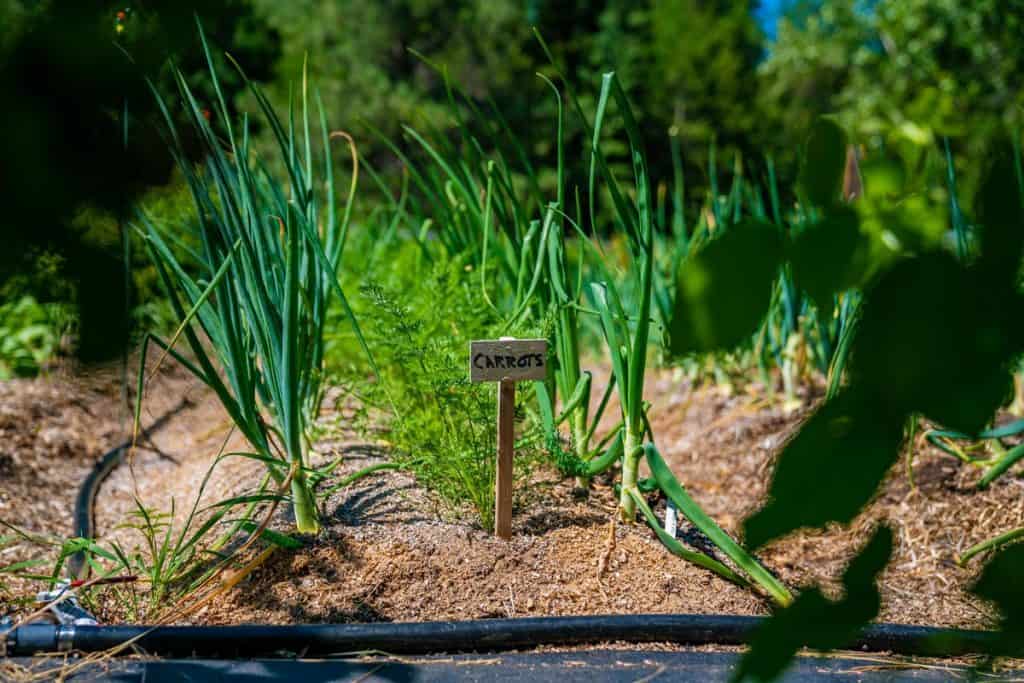
How to Plant Carrots From Seed
Make Rows
I find it helpful to make rows before going through and placing the seeds into the ground. I use 4 pieces of PEX tubing and place them evenly spaced onto the tines of my landscape rake. I space each row of carrots about 6-8 inches apart for a total of 4 rows in my 30-inch beds.
One easy pass along the garden bed row and my four individual rows for carrot seeds are ready.
Mark/Label Each Row
If you’re using multiple varieties of carrot seeds, you’ll want to mark the rows ahead of time, so you don’t end up confused later as to which variety is where!
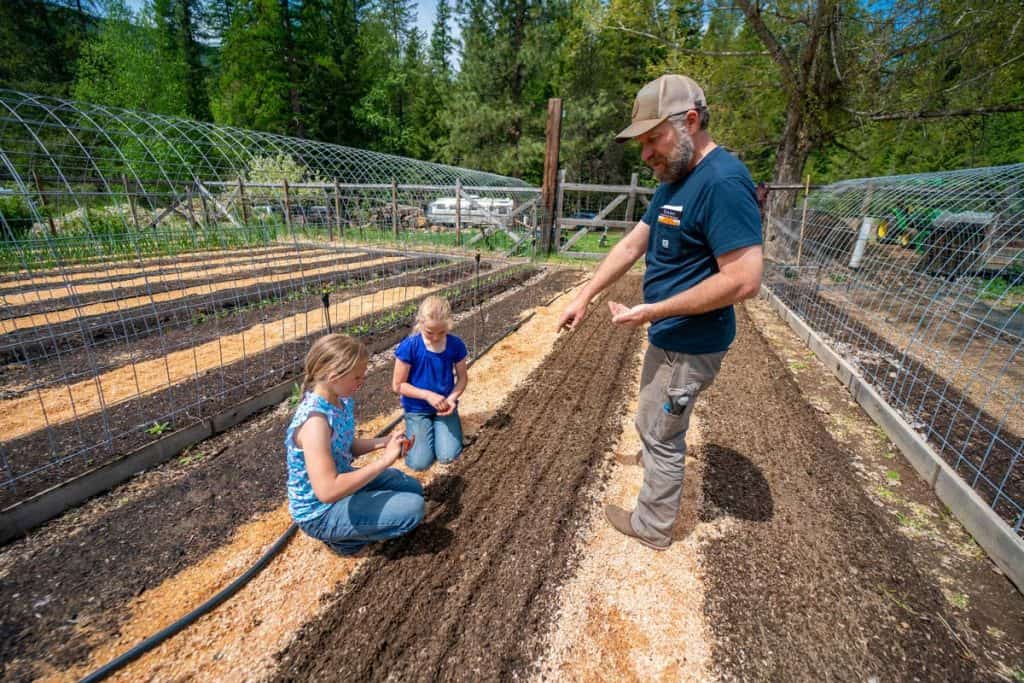
Plant the Carrot Seeds
By taking a pinch of carrot seeds between my thumb and forefinger, I just roll my fingers back and forth and let the carrot seeds drop into the ground at about 1-inch spacing.
You can try to use a seeder, but I have not had much success with mechanical seeders as the carrot seeds are so fine. I can actually do it faster by hand.
Also, I’d always rather plant more densely than too lightly, so don’t worry if a few seeds drop out at a time. You will need to thin them later anyway.

Cover with Sifted Compost
The trick to having carrots that germinate successfully is to ignore the planting directions on the seed packet. Typically speaking, you should plant seeds twice as deep as they are long or wide, whichever is greater.
Well, carrot seeds are extremely thin, and I’ve found that by lightly dusting them with soil, the way most instructions tell you to do, they don’t germinate very well.
It wasn’t until my son was planting seeds in the kid’s garden, covering his carrot seeds with about 1/4-inch of our homemade compost, that I realized I had been making a mistake. His carrots came up wonderfully that year, and mine didn’t.
Ever since then, I place about 1/8-1/4 inch of sifted compost (make your own DIY compost sifter!) over my carrot seeds, and I have had no issues with germination ever since.
By adding a bit more sifted soil over your carrot seeds, you’re helping the soil retain enough moisture for the carrot seeds to properly germinate. That extra bit of soil helps hold the moisture so the carrot seeds don’t dry out as quickly between waterings.
Make sure it is sifted compost or garden soil. Carrot seeds are delicate and need as little obstruction as possible when sprouting and pushing up out of the soil.
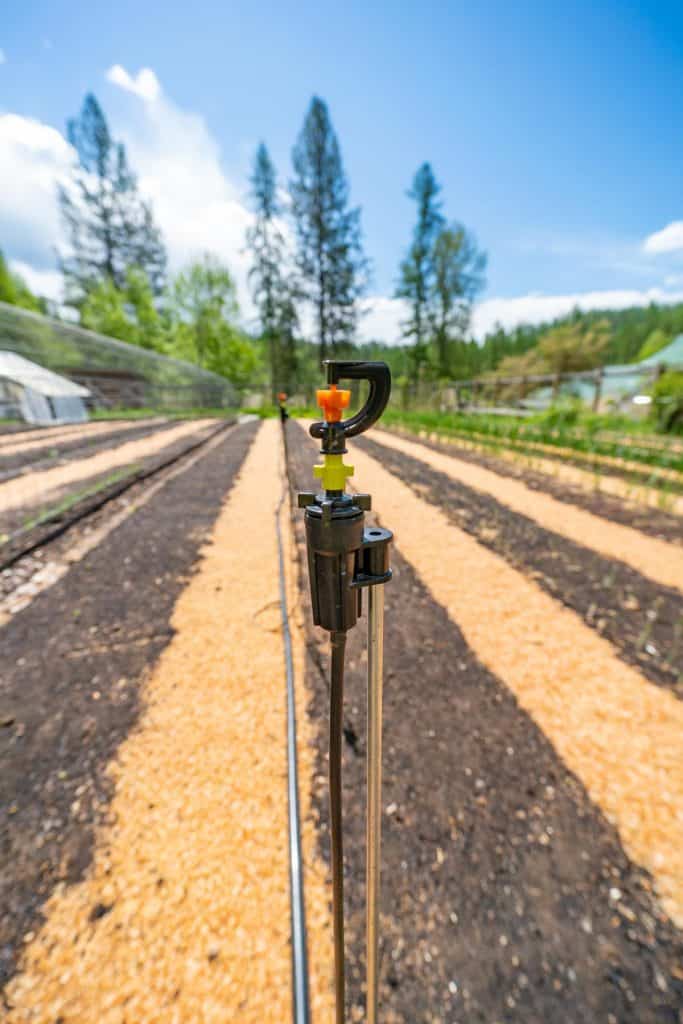
Managing The Carrots
Water
Watering can be tricky when it comes to carrot seeds. It’s easy to get a hose or a sprinkler that lets out large droplets of water, and this is just too much for those light carrot seeds. They can shift in the ground or the soil can get washed away.
I like to use a micro-watering system to give a constant light spray that will be able to go deep and help the seeds to germinate. This light spray keeps my seeds from shifting in the ground and washing away or getting exposed.
Make sure and ALWAYS keep them moist. Placing them 1/8-1/4″ in the ground will help them not to dry out so fast, which means less watering for you… and less stress.
It is often the seeds drying out in the heat since they are so lightly covered that kills or stops those seeds from successfully germinating.

Thinning
Once your carrots start to sprout, you can thin them out to every 2-3 inches apart. Alternatively, what we like to do is to thin them to about one every inch, and pick baby carrots to thin the rows and leave the rest to mature. This strategy also increases our yield.
Check out this updated video where I tour our garden and show how we thin our carrots for fresh eating, as well as saving enough to put up for our long winter below.
Carrots are really very easy to grow once you get them out of the ground, and they are a great winter storage vegetable that adds to your health and food security. Enjoy!

More Gardening Posts
- How to Make Compost the Easy Way (Composting 101)
- Build an Easy DIY Compost Sifter
- Making Raised Garden Bed Rows (& Super-Charging Your Soil)
- How to Build a DIY Hoop House (Greenhouse)
- Growing Onions From Seed
- How to Plant Garlic (Fall Garlic Planting)
- 20 Vegetables You Can Grow in Late Summer
- Get an Instant Garden (Vertical Planters)
- How to Plant Tomatoes, Cucumbers & Peppers
- How to Keep Weeds Out of the Garden



